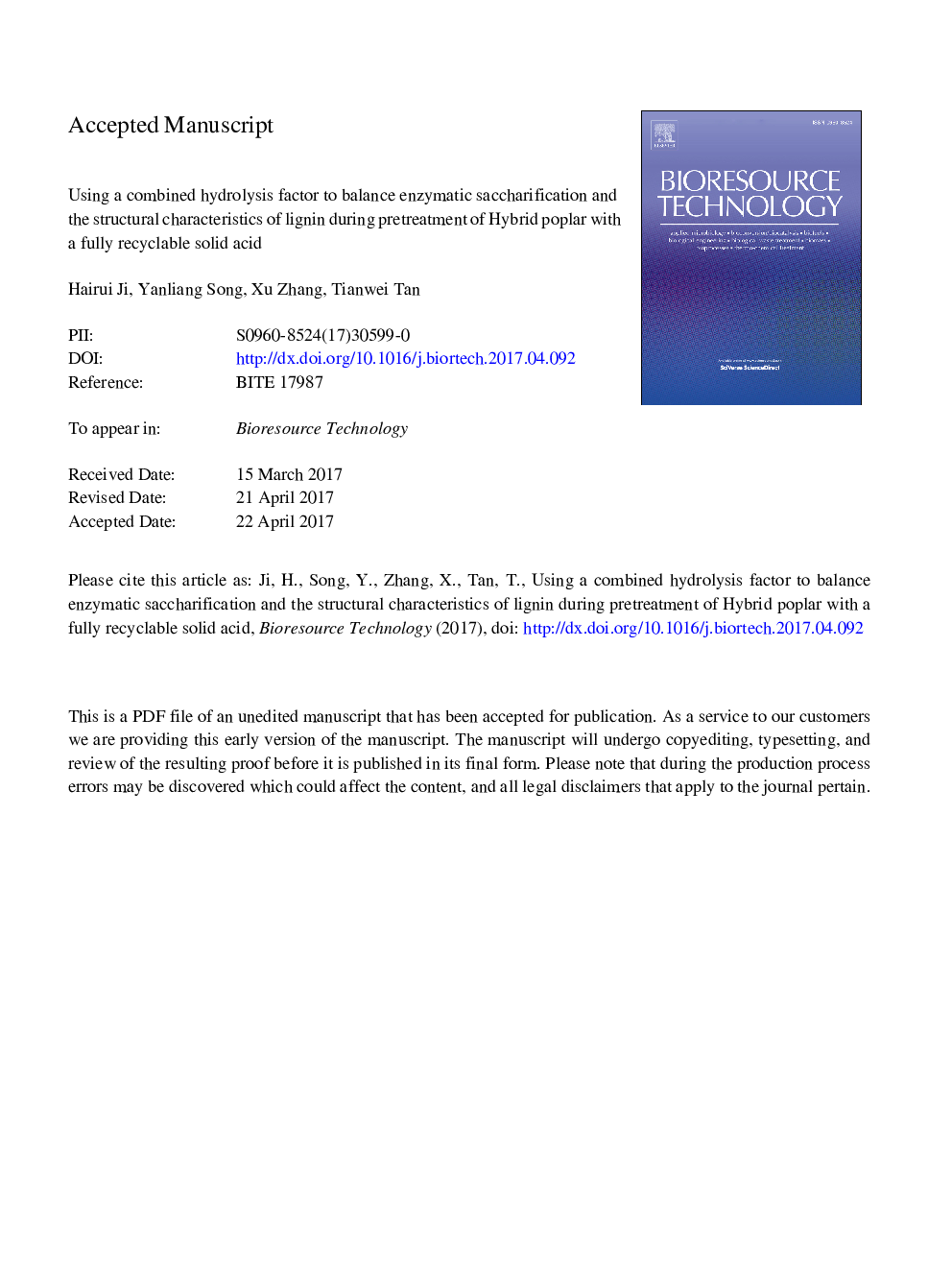| Article ID | Journal | Published Year | Pages | File Type |
|---|---|---|---|---|
| 4997252 | Bioresource Technology | 2017 | 30 Pages |
Abstract
In this study, a new pretreatment strategy for lignocellulosic was developed using a fully recyclable solid acid, Toluenesulfonic acid (p-TsOH). A combined hydrolysis factor (CHF) as a pretreatment severity was used to balance enzymatic saccharification and the structural characteristics of lignin. The results from degradation of carbohydrates, enzymatic hydrolysis of cellulose and characterization of lignin by FT-IR, 31P NMR, GPC, 2D-HSQC NMR indicated that a CHF of approximately 3.90 was the optimal pretreatment severity to facilitate enzymatic saccharification and the potential serviceability of lignin. Then approximately 90% of the xylan was removed to result in a reasonable sugar yield of 76%. Residual lignin showed low molecular weight (Mw, 5783Â g/mol), narrow polydispersities (Mw/Mn, 1.10) and high content of phenolic hydroxyl groups (3.702Â mmol/g); it may be a potential feedstock for phenol monomer and polymeric materials production. In short, this process was regarded as a promising approach to achieve an efficient conversion of lignocellulosic biomass to sugar products and lignin-based materials.
Keywords
Related Topics
Physical Sciences and Engineering
Chemical Engineering
Process Chemistry and Technology
Authors
Hairui Ji, Yanliang Song, Xu Zhang, Tianwei Tan,
